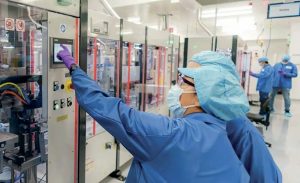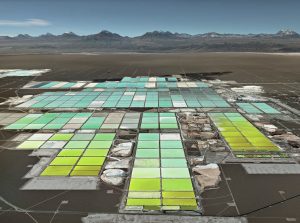
Nitrogen+Syngas Expoconference 2025
A review of papers presented at CRU’s Nitrogen+Syngas 2025 Expoconference, held in Barcelona from February 10th-12th 2025.

A review of papers presented at CRU’s Nitrogen+Syngas 2025 Expoconference, held in Barcelona from February 10th-12th 2025.

TotalEnergies has signed agreements with Air Liquide to develop two projects in the Netherlands for the production and delivery of some 45,000 t/a of green hydrogen produced using renewable power, generated mostly by the OranjeWind offshore wind farm, developed by TotalEnergies (50%) and RWE (50%). These projects will cut CO2 emissions from TotalEnergies’ refineries in Belgium and the Netherlands by up to 450,000 t/a and contribute to the European renewable energy targets in transport.

Horisont Energi says that Fertiberia’s participation in the Barents Blue ammonia project will end on February 28th 2025. The two companies had been collaborating on the project since August 2023. Horisont Energi says that it is now looking for additional industrial partners to “further strengthen” the project, which aims to produce 1.0 million t/a of low carbon ammonia using 99% carbon capture at a plant at Markoppnes in northern Norway. Barents Blue has secured sufficient power supply for the first phase of the project, and is supported by a grant via the EU IPCEI hydrogen program, Hy2Use. The project is targeting a final investment decision in 2026 and estimated production start in 2029/2030.

Johnson Matthey (JM) has signed an agreement with Bosch, a leading supplier to the automotive industry, to develop and produce catalyst coated membranes (CCM) for use in fuel cell stacks. JM’s high performance CCMs will be used in Bosch’s integrated, compact and scalable fuel cell power module for commercial vehicles, designed for longer distances.

PT Pupuk Kujang, a subsidiary of state-owned fertilizer producer holding company PT Pupuk Indonesia, is conducting a trial production of green ammonia projected to replace coal in the power generation industry. In local press reports, Robert Sarjaka, Director of Operations and Production of Pupuk Kujang, said that the production of green ammonia is part of the company’s efforts to contribute to realizing the energy transition in Indonesia, namely making Pupuk Kujang the first company to produce green ammonia in the country. Pupuk Kujang receives green hydrogen from renewable power supplied by PLN Indonesia Power (PLN IP), part of state power utility PT PLN. In the first trial phase, Pupuk Kujang will process 1 t/d of green hydrogen into 5 t/d of green ammonia.

Lithium sulphur battery manufacturer Lyten has signed agreements with California Sulphur Company, at the Port of Los Angeles, and a Port of Stockton company to supply US domestically sourced, industrial-grade sulphur to Lyten’s manufacturing facilities in San Jose, CA, San Leandro, CA, and its recently announced Reno, NV, “gigafactory”.

Metso has launched its new Cu POX leaching process for the copper extraction industry. The company says that, as ore compositions change due to depletion of deposits and increasing environmental and efficiency demands, this solution not only maximises copper recovery but also reduces environmental impact.

Rapidly increasing lithium production is projected to require several million t/a of sulphuric acid in the next few years, with China, the USA and Australia the main consumers.

Simon Inglethorpe, editor of Fertilizer International, shares his thoughts on the hurdles facing the fertilizer industry and how best to vault these.

ICL Group is investing in production from its unique potash assets to help secure global food security and contribute to a more sustainable world.